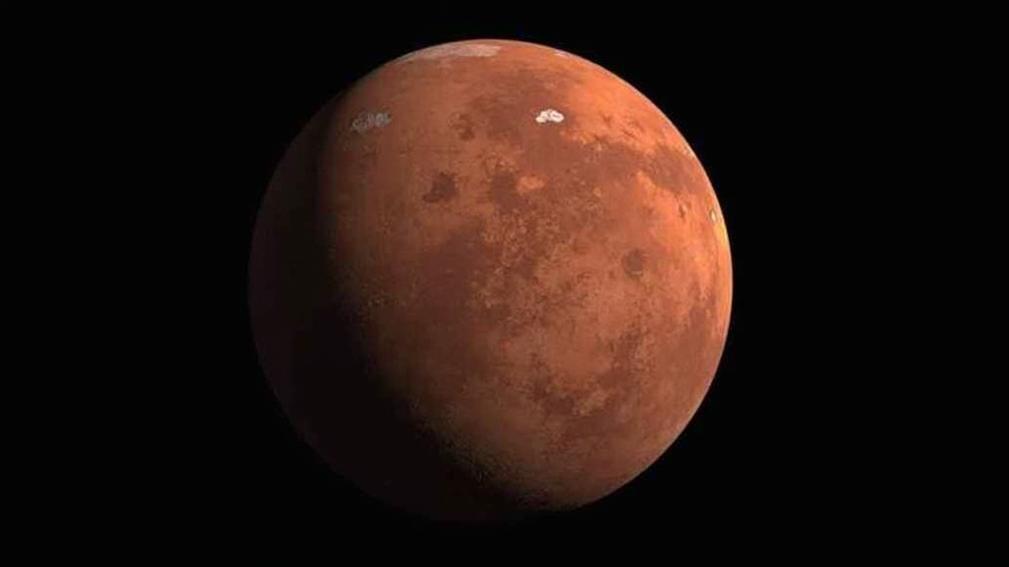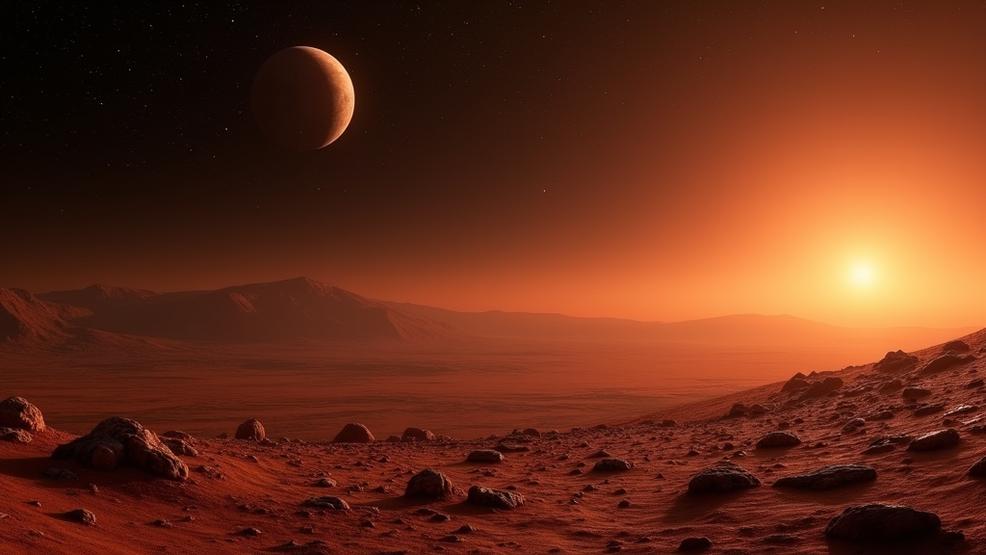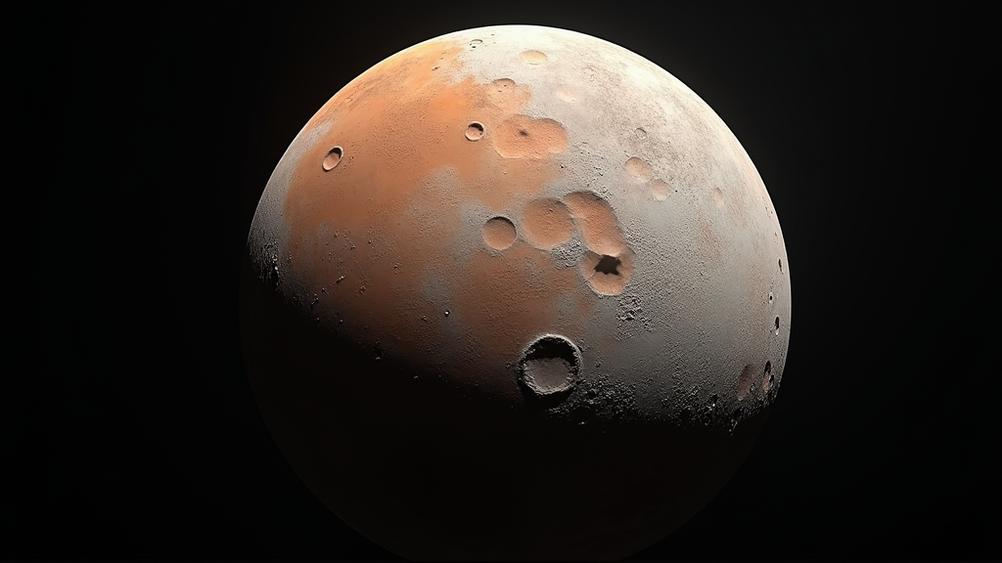Deimos Moon: Definition, Distance, Facts, Comparison
Deimos is one of Mars’ two moons, discovered by American astronomer Asaph Hall in 1877. The smaller outer moon orbits Mars every 30 hours, 11 minutes, and 9 seconds at a distance of 20,000 kilometers. Deimos has a diameter of 12 kilometers and is named after Ares’ son in Greek mythology.
Deimos orbits Mars at an average distance of 23,460 km. Its elliptical orbit varies between 20,000 km and 27,000 km from Mars. Deimos takes 30.3 hours to complete one orbit around the planet.
Deimos is one of the smallest moons in the solar system, with a mean radius of 6.2 km. The moon has an irregular, potato-like shape and a volume of 998.00 km^3. Deimos’ surface is covered by a dusty regolith composed of rocky material and features craters, with the largest measuring 2.3 km in diameter. The escape velocity from Deimos is 20 km/h, reflecting its small size and low gravity.
Deimos maintains an average distance of 225,020,000 kilometers from Earth. The distance varies by up to 20% due to elliptical orbits, with the closest approach measuring 206 million kilometers and the farthest distance reaching 401 million kilometers.
What is Deimos in astronomy?
Deimos is one of Mars’ two moons, discovered by American astronomer Asaph Hall in 1877. Deimos orbits Mars every 30 hours, 11 minutes, and 9 minutes at a distance of 20,000 kilometers. Deimos is the smaller, outer moon with a 12-kilometer diameter. Greek mythology named Deimos after Ares’ son.
Deimos satellite is tidally locked to Mars. Its orbital period is 30.3 hours. Deimos orbits Mars in a nearly circular path. The moon rises in the west and sets in the east due to its retrograde motion.
Deimos surface is heavily cratered. The moon’s composition consists of rock and ice. Deimos has a low albedo, indicating a dark surface. Its surface temperature ranges from -153°C to 27°C.
Deimos has a very low mass of about 1.47 x 10^15 kilograms. The moon’s weak gravitational pull prevents it from capturing a stable atmosphere. Deimos Mars relationship is characterized by tidal interactions. The moon is slowly spiraling inward towards the planet.
How big is Deimos moon?
Deimos measures approximately 12 kilometers in diameter. Dimensions are roughly 15 x 12 x 11 kilometers (9.3 x 7.5 x 6.8 miles). Deimos orbits Mars every 30 hours at a distance of 14 miles (22 kilometers). Deimos ranks among the smallest moons in the solar system. Deimos compares in size to a small city like Manhattan.
How far is Deimos from Mars?
Deimos orbits Mars at an average distance of 23,460 km. Deimos’s elliptical orbit varies between 20,000 km and 27,000 km from Mars. Deimos takes 30.3 hours to complete one orbit. Deimos orbits much farther from Mars than Phobos, which averages 6,000 km from the planet.

Can you see Deimos from Mars?
Observers on Mars are definitely able to see Deimos with the naked eye. Deimos appears as a bright, star-like object in the Martian sky with a magnitude of 12.4. Deimos rises in the west and sets in the east. Deimos orbits Mars at 20,000 kilometers, much closer than Earth’s moon. Deimos looks smaller and fainter than Phobos.
Viewing Deimos from Mars requires optimal conditions and timing. The moon is most visible during the Martian night when the sky is darkest. Deimos has an apparent magnitude of +12.4 from Mars, making it challenging to spot with the naked eye. The dusty Martian atmosphere scatters light and obscures the view of Deimos. Observers on Mars must wait for Deimos to reach its highest point in the sky for the best visibility.

What are the facts about Deimos moon?
The facts about Deimos moon are listed below.
- Deimos is the smaller of Mars’ two natural satellites and the outer moon.
- It is one of the smallest moons in the solar system, with a mean radius of 6.2 km (3.9 mi).
- Deimos has a potato-like, irregular shape with a major diameter of about 12 km.
- The moon has a volume of 998.00 km^3.
- American astronomer Asaph Hall discovered Deimos in 1877.
- Its surface is covered by a dusty “regolith” and is composed of rocky material.
- Deimos features craters, with the largest measuring approximately 1.4 miles (2.3 km) in diameter.
- The craters on Deimos appear more subdued than those on Phobos.
- Deimos takes 30.3 hours to complete one orbit around Mars.
- It maintains an average distance of 23,460 km (14,580 mi) from Mars.
- The escape velocity from Deimos is 20 km/h, reflecting its small size and low gravity.

What is Deimos distance to Earth?
Deimos, Mars’ smaller outer moon, maintains an average distance of 225,020,000 kilometers from Earth. Distance varies by up to 20% due to elliptical orbits. Closest approach measures 206 million kilometers. Farthest distance reaches 401 million kilometers. Astronomers use radar ranging, laser ranging, and orbital mechanics for accurate calculations.
How does Deimos compare to Earth?
Deimos, Mars’ smaller moon, measures 12 km in diameter compared to Earth’s 12,742 km. Deimos’ gravity is 1/1000th of Earth’s 9.8 m/s². Deimos features a rocky regolith surface, smoother and finer than Earth’s. Loose, tiny grains and debris partially bury Deimos’ surface. Deimos retains considerable original material despite its size. Craters lie on Deimos’ geologically inactive surface.
Deimos has loose regolith covering its surface, shaped by meteorite impacts over time. Earth has a solid surface with diverse rocks and minerals. Deimos resembles an asteroid in composition, likely composed of carbonaceous chondrite material. Earth is a terrestrial planet with a complex geological structure.
Deimos orbits Mars with a period of about 30 hours in a highly elliptical orbit. Earth orbits the Sun with a period of 365.25 days in a nearly circular orbit. Deimos appears brighter than Venus from Mars’ surface when viewed from Earth. Earth’s moon appears much brighter from Earth than Deimos does from Mars.
What is the diameter of Deimos?
Deimos has an irregularly shaped major diameter of approximately 15 km (9.3 miles). The minor diameter measures about 12 km (7.5 miles). Scientists calculate the average diameter as 12.4 km (7.7 miles). Planetary researchers study Deimos’ ellipsoidal shape and elongated axis. Astronomers measure Deimos’ size in both kilometers and miles using conversion templates.
Deimos is classified as a small, irregularly shaped moon. Space agencies have extensively studied and measured Deimos to determine its size accurately. Deimos orbits Mars at a distance of about 20,000 kilometers. Deimos’ size is significantly smaller than its companion moon Phobos. Scientists consider Deimos one of the smallest moons in the solar system.
Does Deimos have an atmosphere?
Deimos possesses an extremely thin exosphere, primarily composed of carbon dioxide. Deimos’ atmosphere measures 10^-12 times Earth’s atmospheric pressure. Low gravity and small size prevent substantial atmosphere formation. Solar winds constantly strip away atmospheric particles. Deimos-Phobos system intrigues scientists studying Martian moon evolution. Deimos has a thicker atmosphere than Phobos.
Deimos has a surface pressure approximately 10^-12 times that of Earth. Deimos contains trace amounts of carbon dioxide, water vapor, and methane. Deimos’ low gravity causes gases to quickly escape into space. Deimos remains exposed to harsh space conditions due to its lack of atmosphere.

